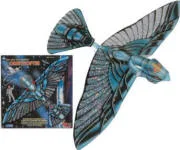
This is the Direct Conversion receiver that Dean and I have built. We plan to have students at a local high school build it, starting in early February. We would like to have some others build it, to make sure that the design is re-producible without problems.
Please build this receiver! But we ask that you build it exactly as per the schematic above and below. Innovation can come later -- for now we just want to make sure this thing works, that there are no errors in the schematic, and that it can be built by the students with minimum woe. Thanks in advance!
Dean or others with 3D printers may be able to supply the plastic form for the PTO inductor.
We know of one other builder, but he is having some trouble. We would like to confirm that this design is sound.
-------------------
Above is the screenshot of the LTSpice model of the 40 meter Direct Conversion receiver that Dean KK4DAS and I have been working on. I will post a larger scale version of the picture below. Click on the images for a better view. Comments welcome. Please let us know if you find any errors or mistakes. Realize that we wanted to keep this all simple, discrete, and entirely analog.
Here (I hope!) is the net list for the LTSpice model:
First, one of the surprising things about the LTSpice model: IT IS ALIVE! I never had a VFO or PTO actually turn on for me in LTSpice. This one did! So I just connected the PTO to the Mixer and the receiver works in LTSpice. I just put an RF signal at the receiver input, and you can see the resulting AF across the 8 ohm resistor at the audio amp output. I was even able to calculate the precise frequency of the PTO: 7078 kHz. As in the real world, in an effort to stabilize the frequency, I changed the capacitors to NP0 in LTSpice. Very cool. Dean joked that all we need is a way to get RF in and audio out and we will have made an SDR receiver.
About the receiver:
-- Four stages that will be built by students Manhattan-style on four copper clad boards: Bandpass filter, diode ring mixer, Permeability Tuned Oscillator (PTO), AF Amplifier.
-- The bandpass filter is a simple dual-tuned circuit device based on the info on the QRP Labs site. (Thanks Hans!) We out a 10k pot as an RF gain control between the antenna and the filter.
-- The mixer is a standard diode ring. We included a diplexer at the output using a circuit from the famous W7EL Optimized transceiver. (Thanks Roy!)
-- The Permeability Tuned Oscillator is a very simple and very stable Colpitts design developed by Farhan VU2ESE. We added a simple FET buffer using the circuit in Farhan's Daylight Again rig. (Thanks Farhan!)
-- The AF amp is a very simple three transistor amplifier based loosely on designs from Forrest Mims and from the Herring Aid 5 receiver. Both these designs use just two stages -- we added a third and put an AF gain pot between the first and the second stages. There is an impedance mismatch between the diode ring and the AF amp, but we found that most of the proposed solutions were more trouble than they were worth, so we left it as is.
--Thanks to Wes W7ZOI for his November 1968 QST article on the solid-state DC receiver. Wes's article inspired our efforts.
Dean and I have both built these receivers. They work very well. Dean has even decoded FT-8 with his. We used Radio Marti at 7355 kHz to test for AM breakthrough -- with the diode ring, the diplexer, and the RF gain control we were able to bring the AM breakthrough down to acceptable levels. You can see many videos of my receiver in action over on my YouTube channel: (355) SolderSmoke - YouTube Here is a larger image of the schematic (click for a full view):
And here is a nicer schematic done by our friend Walter KA4KXX:









































